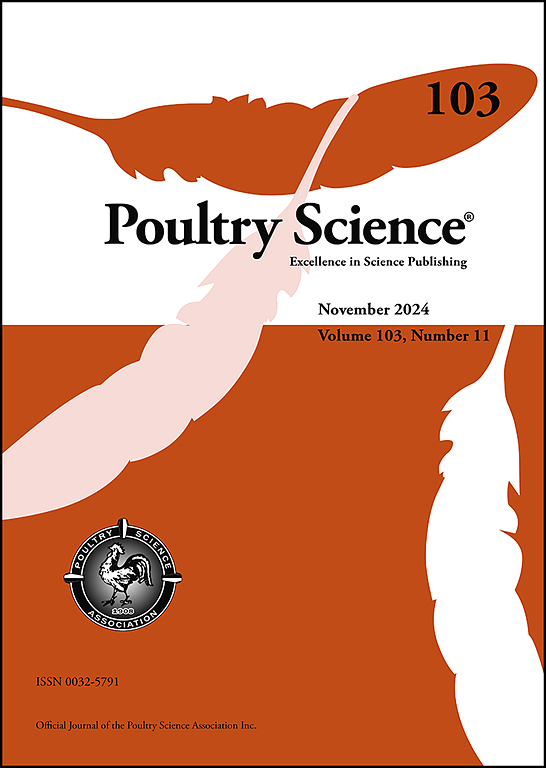The characterization of uterine calcium transport and metabolism during eggshell calcification of hens laying high or low breaking strength eggshell
IF 3.8
1区 农林科学
Q1 AGRICULTURE, DAIRY & ANIMAL SCIENCE
引用次数: 0
Abstract
This study investigated the differences of calcium transport-related proteins and metabolites in the uterus of hens with different breaking strength eggshell during the eggshell calcification. A total of 200 Hy-Line Brown laying hens, aged 75 weeks, were selected and categorized into two groups based on the eggshell breaking strength: a high-strength group (HS, > 42 N) and a low-strength group (LS, < 32 N). Laying hens were sampled at 1 h, 7 h (the initiation stage of eggshell calcification), and 17 h (the growth stage of eggshell calcification) post-oviposition (PO). The LS group showed a decreased thickness, weight and weight ratio of eggshells, accompanied with ultrastructural deterioration and total Ca reduction. The expression levels of ATP2A3, ATP2B2, SLC8A1, and SLC8A3 were significantly increased in the HS at 17 h PO when compared to 1 h and 7 h PO, while no significant changes were observed in the LS. At 7 h PO, the LS group had lower uterine mucosa calcium levels, higher TRPV6 protein expression, and lower CALB1 protein expression. In the HS group, uterine metabolites showed a significant increase in glutathione, citrulline, and proline at 7 h PO, whereas, at 17 h PO, the tricarboxylic acid cycle pathway was significantly enriched. These findings suggest that uterine calcium transport activity is relatively subdued during the initiation stage of eggshell calcification, focusing on redox repair activities to maintain homeostasis for mammillary knobs formation. Subsequently, uterine calcium transport activity becomes highly active during the growth stage of eggshell calcification, primarily supporting rapid calcium transport through enhanced energy metabolism. In aged laying hens, the lower eggshell breaking strength may be attributed to decreased calcium levels during the initiation stage and imbalanced redox during the growth stage, which could affect calcium transport and lead to a weak ultrastructure during the calcification period.
求助全文
约1分钟内获得全文
求助全文
来源期刊

Poultry Science
农林科学-奶制品与动物科学
CiteScore
7.60
自引率
15.90%
发文量
0
审稿时长
94 days
期刊介绍:
First self-published in 1921, Poultry Science is an internationally renowned monthly journal, known as the authoritative source for a broad range of poultry information and high-caliber research. The journal plays a pivotal role in the dissemination of preeminent poultry-related knowledge across all disciplines. As of January 2020, Poultry Science will become an Open Access journal with no subscription charges, meaning authors who publish here can make their research immediately, permanently, and freely accessible worldwide while retaining copyright to their work. Papers submitted for publication after October 1, 2019 will be published as Open Access papers.
An international journal, Poultry Science publishes original papers, research notes, symposium papers, and reviews of basic science as applied to poultry. This authoritative source of poultry information is consistently ranked by ISI Impact Factor as one of the top 10 agriculture, dairy and animal science journals to deliver high-caliber research. Currently it is the highest-ranked (by Impact Factor and Eigenfactor) journal dedicated to publishing poultry research. Subject areas include breeding, genetics, education, production, management, environment, health, behavior, welfare, immunology, molecular biology, metabolism, nutrition, physiology, reproduction, processing, and products.
 求助内容:
求助内容: 应助结果提醒方式:
应助结果提醒方式:


